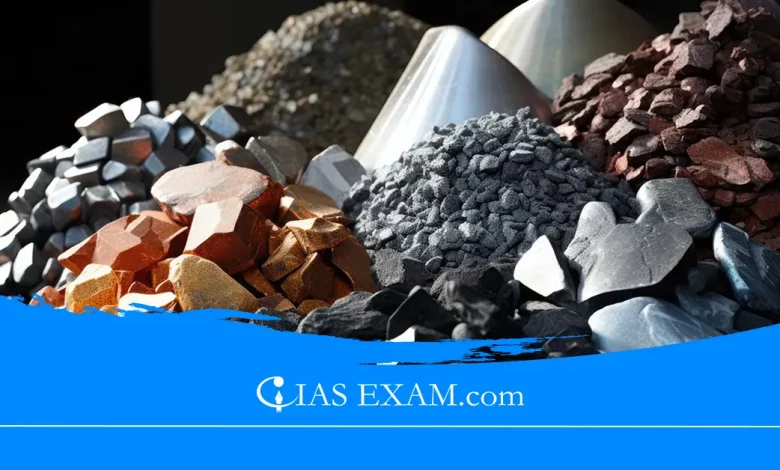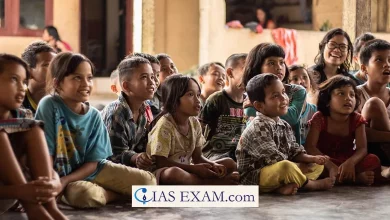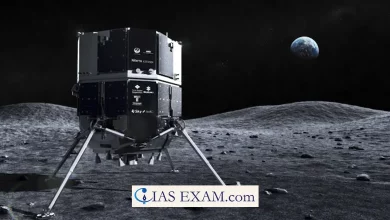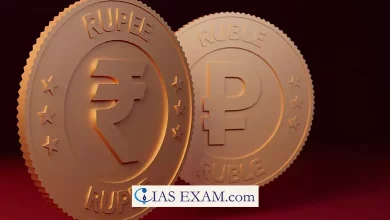Daily Current Affairs for UPSC
Auction of Critical & Strategic Minerals
Syllabus- Economy [GS Paper-3]

Context
India has launched the auction of 18 critical and strategic mineral blocks valued at about 30 lakh crore.
About
- It is consistent with the country’s ambition to generate 50 percent of its electric powered energy from non-fossil sources through 2030, consequently aligning with global sustainability goals, emphasizing responsible exploration and extraction of critical minerals.
About Critical Minerals
- A mineral is labelled as critical when the risk of supply shortage and associated effect at the economy is relatively higher than the other raw substances.
- The chance of supply shortage could preferably capture import dependence, recycling capacity, and substitutability of these minerals.
- The Centre for Socio and Economic Progress (CSEP) in its paper “Assessing the Criticality of Minerals in India” (2023) evaluated the criticality of minerals in India based on two dimensions:
- economic importance for the Indian economic system and
- supply risks.
Significance of Critical Minerals
- Critical minerals are critical for our country’s economic development and national security as they’re critical for sectors like renewable power, security, prescription drugs, and high-tech electronics.
- The loss of availability of these minerals or awareness in their extraction or processing in a few countries may additionally lead to supply chain vulnerabilities.
- The future global economic system will be underpinned by technologies that depend upon minerals which include lithium, graphite, cobalt, titanium and Rare earth elements (REE).
- India has committed to attain 50% of cumulative electric power established capacity from non-fossil sources by 2030.
- Such a formidable plan for energy transition is set to drive the demand for electric powered cars, wind and solar energy tasks.
- Critical minerals cater to the desires of sectors like renewable power, defence, agriculture, pharmaceutical, excessive-tech electronics, telecommunications, transport, creation of gigafactories and so forth.
Recent Developments
- An amendment to the MMDR Act in 2023 recognized 24 minerals as critical and strategic, empowering the Central Government to provide mineral concessions.
- Antimony, Arsenic, Barium, Beryllium, Bismuth, Boron, Chromium, Cobalt, Copper, Gallium, Germanium, Graphite, HafniumIndium, Lithium, Magnesium,Molybdenum, Niobium,Nickel, Platinum Group Metals (PGMs), Rare Earth Elements (REEs), Rhenium, Selenium and Silicon.
- The amendment confers the energy to supply mineral concession of these minerals to the Central Government and the revenue generated from these auctions shall accrue to State Governments.
- The Ministry of Mines additionally announced enlargement of its Science and Technology Programme to fund studies and innovation in startups and MSMEs in the Mining region.
Domestic and global outreach by India
- The Geological Survey of India has accomplished a mineral exploration at some point of Field Season 2020-21 and 2021-22 in Salal-Haimna regions of Reasi district, Jammu & Kashmir, and estimated an inferred useful resource of 5.9 million tonnes of lithium ore.
- In addition, a joint venture organization particularly Khanij Bidesh India Ltd. (KABIL) has been mandated to become aware of and collect foreign places mineral belongings of critical and strategic minerals consisting of lithium, cobalt and others.
- India has these days been inducted into the Mineral Security Partnership (MSP).
Mineral Security Partnership (MSP)
- It is a US-led collaboration of 14 countries that would focus on the supply chains of minerals such as Cobalt, Nickel, Lithium, and also the 17 ‘rare earth’ minerals.
- Members: Australia, Canada, Finland, France, Germany, India, Italy, Japan, the Republic of Korea, Norway, Sweden, the UK, U.S., and the EU.
- Mandate: To catalyse public and personal funding in vital mineral supply chains globally.
Way Ahead
- This auction technique is poised to play a crucial role in assisting India’s economic system, fortifying national security, and bolstering efforts closer to a sustainable and clean energy trajectory.
- Further, India needs to diversify its import sources for critical minerals to lessen reliance on a single provider, form strategic partnerships with countries rich in critical minerals and collaborate with developed countries for research and development.
Source: The Indian Express
UPSC Mains Practice Questions
Q.Despite India being one of the countries of Gondwanaland, its mining industry contributes much less to its Gross Domestic Product (GDP) in percentage. Discuss. (2021)





.png)



